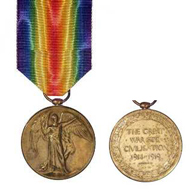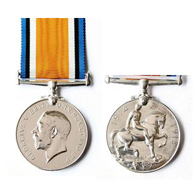WOLFENDEN Ernest
-

- 16243
- Sapper
- 45 Battalion
- November 1916 Reinforcements
- Maleny
- Yes
- 10 September 1895
- Arncliffe, New South Wales
- 9 October 1916
- HMAT A29 Suevic
- 11 November 1916
- Sydney, New South Wales
-
Ernest Leslie Wolfenden was born and educated at Arncliffe, New South Wales. Born 10 September 1895, Ernest was the third of seven children born to George Stephen and Emily Amelia (n`ee Chipperfield) Wolfenden. Father, George Stephen died on the 28th May 1912, at Arncliffe, from "Effects of injuries accidently received through a chimney stack falling upon him." Mother, Emily, moved to Maleny with her family and the elder sons were living and working as farmers and Dairy farmers at Wootha, Maleny Qld.
Enlistment
Ernest, at the age of 21 years and 1 month, enlisted in the AIF at Sydney, NSW on the 9th October, 1916 and was placed in the November 1916 Reinforcements Unit. He was single, stood 5 feet and 4 1/2 inches high, of fair complexion, blue eyes, brown hair and of Church of England Faith. He stated that he was a fully qualified plumber having done a 5 1/2 years apprenticeship to A. E. Cornish. He had previously served with the Militia Engineers for 2 1/2 years before he resigned. His Next of Kin was his mother Emily Amelia Wolfenden, Post Office, Wootha, Maleny, Queensland.
Military Service
Sapper Ernest Wolfenden, Service No 16243 Embarked from Sydney, New South Wales on board HMAT A 29 Seuvic on 11 November 1916 and Disembarked Devonport on 30 January 1917.
On 4 February marched in to No 6 & 7 Camps, Perham Downs and then on 16 February from there to the Engineers Training Depot, Brightlingsea, England. After 3 months training Sapper E L Wolfenden proceeded overseas to France from Folkstone and marched into the Australian General Base Depot, Etaples and on the 2nd June marched out to the 4th Division Engineers. On 8 June 1917 he was Taken on Strength of the 13th Field Company Australian Engineers, Belgium.
Sickness struck and on 5 July was taken to hospital sick with Pyrexia (fever) Unknown Origin and a week later returned to Duty. On 26 September, 1917 he was Wounded in Action with shrapnel wounds to the left hand at Ypres and was admitted to the 3rd Australian Field Ambulance. The news that he was injured made it into the 349th List and was reported in the "Sydney Morning Herald" of 3 November and also the "Queenslander" - 10 November 1917 - "Spr E L Wolfenden - Wootha Queensland..." He rejoined his unit and on 11 February 1918 was granted leave to Paris for a week rejoining his unit on 18 February only to be taken to the hospital with PUO again and two weeks later at the 4th General Hospital was diagnosed with Trench Fever. A fortnight later he was admitted to convalescent at the 5th Convalescent Depot Etaples and on 6 April transferred to the Australian General Base Depot, Havre before rejoining his unit in the Field on 18 April.
On 23 April 1918 he was transferred to the 45th Battalion. Like most AIF battalions, the 45th rotated in and out of the front line throughout the winter of 1917-18. In the spring of 1918 it played a crucial role in turning the last great German offensive of the war when it defeated attacks aimed at breaking through the British front around Dernancourt. The Allies launched their own offensive on 8th august with the battle of Amiens. On the first day of the battle the 45th Battalion captured 400 German prisoners, 30 artillery pieces and 18 machine guns. 8th August became known as the "black day of the German Army" and initiated a retreat back to the formidable defensive barrier known as the Hindenburg Line.
Sickness again saw Ernest head back to hospital, this time with influenza and after a month in Havre rejoined his Battalion in France before being granted leave to the United Kingdom for a fortnight and rejoined his Battalion from leave on 22 October 1918,
During his absence the 45th had fought its last major action of the war when, on September 18, around Le Verguier, the "outpost" that guarded the approaches to the main defenses was seized. The battalion was out of the line when the war ended on 11 November 1918 and was disbanded on 2 May 1919.
Ernest suffered a return of the influenza and on 23 November 1918 was back in hospital in France and it was not until 12 January that he returned to the Australian Infantry Base Depot, Havre, ready to march out to his unit and rejoin in the "Field" before returning from Havre to England, late April, in preparation for his return to Australia. He was demobilised and on 16 June 1919 embarked aboard HT "Ormonde" landing in Sydney on 4 August 1919 and on 11 September 1919 was discharged.
Personal
Ernest married Irene Kathleen Ramage on 20 December 1921 and they had children, Ken born in 1922 at Rockhampton Queensland, Don born in 1924 at Alpha Queensland, Rae born in 1928 at Ashfield NSW and Jack born in 1928. The Australian Electoral Roll of 1925 show them living at Bogantungan, Bundaberg Queensland where Ernest was a storekeeper and by 1933 they had moved back to Arncliffe NSW, Ernest`s home town where he was working as a Postal Assistant.
Death and Funeral Notices in the "Sydney Morning Herald" on 26 and 28 June 1938 indicate that Ernest Leslie Wolfenden died on 26 June 1938 aged 42 years. He was survived by his wife Irene, mother Emily and his children Ken, Don, Rae and Jack. He was buried at the Woronora Crematorium.
- Western Front
-

-

- Returned to Australia
- 16 September 1916
- 26 June 1938
- Arncliffe, New South Wales.
- 42 years
- Crematorium Woronora
-
Soldiers Memorial Hospital Maleny Roll of Honor, Soldiers Memorial Hospital, Bean Street, Maleny
Shire of Landsborough Roll of Honour, Caloundra RSL, West Terrace, Caloundra
- Robyn Webster
